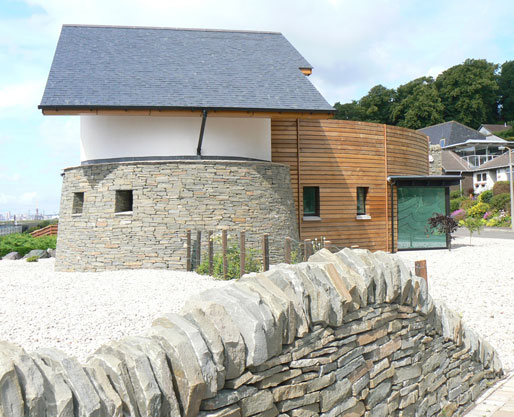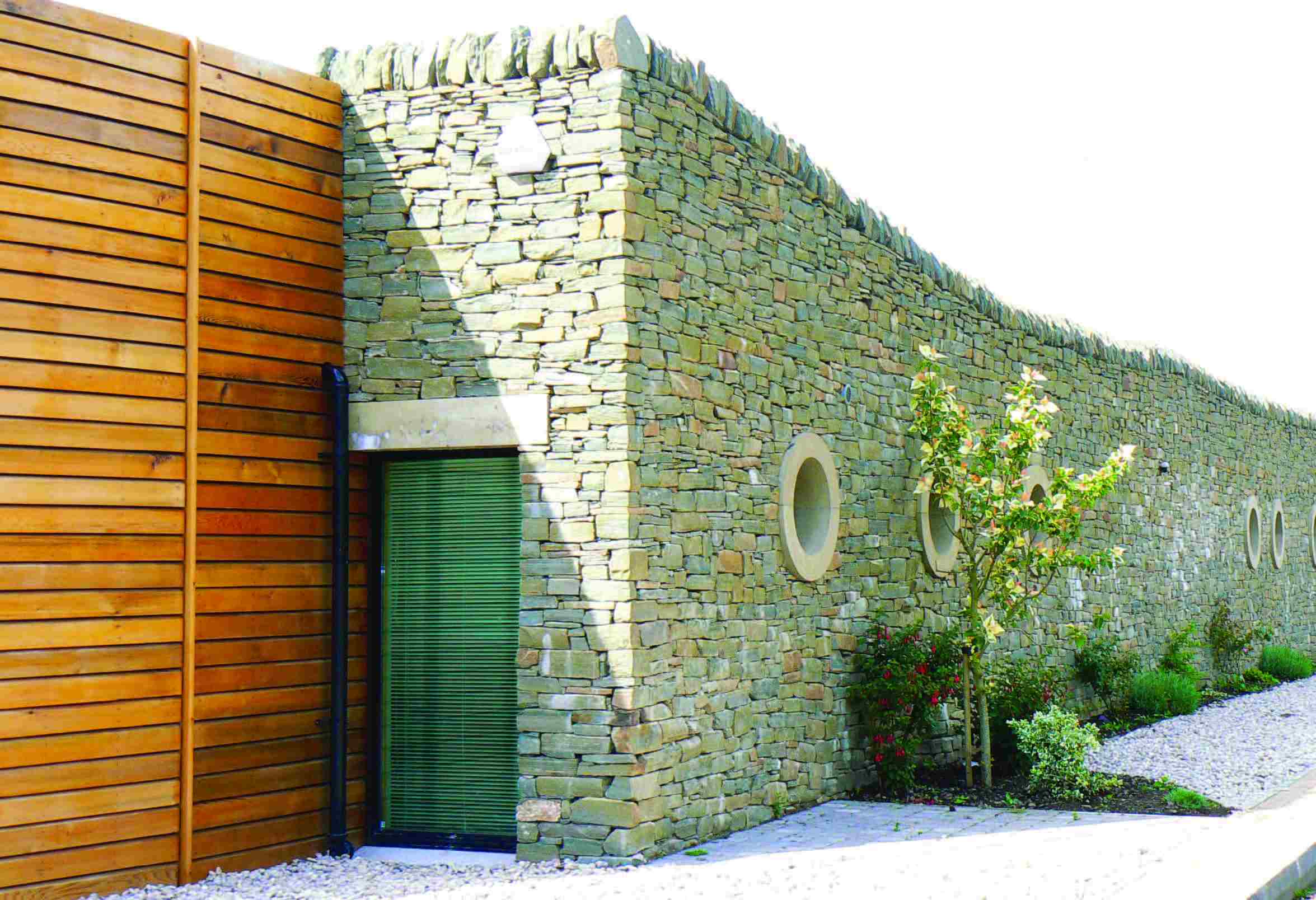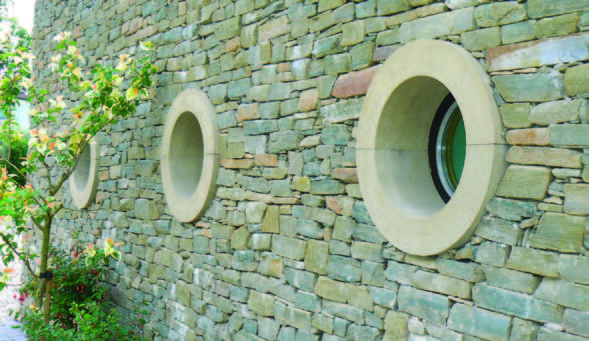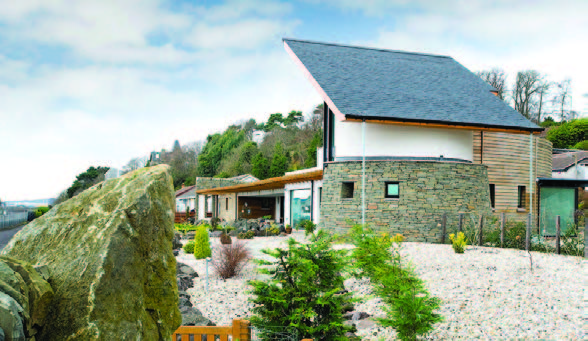The client for this project approached the architect with a request to design a house that reflected both its surroundings and the interests of its resident. The one-storey building has various finishes but is built primarily of timber, glass and stone with a grass roof.
The long, low building is designed to take maximum advantage of the seafront location, while minimising disruption to the views of the adjacent neighbours with a grass roof.
This roof adds an additional layer of insulation to a building that is already extremely well-insulated. The house also has a passive, fresh-air ventilation system and underfloor heating.
Stone features
The style of construction used in this house has become popular. Essentially, the approach was to construct a timber kit building and create a dry-stone dyke as cladding on the exterior walls.
The strong tower-like elevation has a defensive appearance but leads to a softer core and a living space with a fully glazed frontage overlooking the sea.
The designers saw the stone wall element with the portholes in terms of a traditional buttress wall, which can be seen at Broughty Castle nearby. A gateway in the stone wall leads through the living space to the glass wall frontage.
The glazed front elevation continues to a terrace with a rockery-style wall, giving the impression that the house is part of the shoreline. The timber and glass roof structure sits above this, like a beach hut.

Special techniques
The exterior stone walls are constructed of guillotined stone, a method where natural, random stone is cut and then applied to the frame of the building as a cladding material.
The stone is prepared off-site and delivered ready to use, saving time on site. Lime mortar is used to hold the stone together but only in the core of the wall. This allows the wall surface to retain a traditional drystone appearance.
In terms of sustainability, the stone is sourced locally from Pitairlie Quarry, which is less than 20 miles from the site. Given the small pieces involved, some of this material is recycled from the quarrying process.
A library of sustainable building materials
Our website includes a web-based resource that showcases sustainable, traditional, innovative, recycled and low carbon building materials. If you are looking for inspiration or information on different types of materials to consider for your project, visit our materials library.




